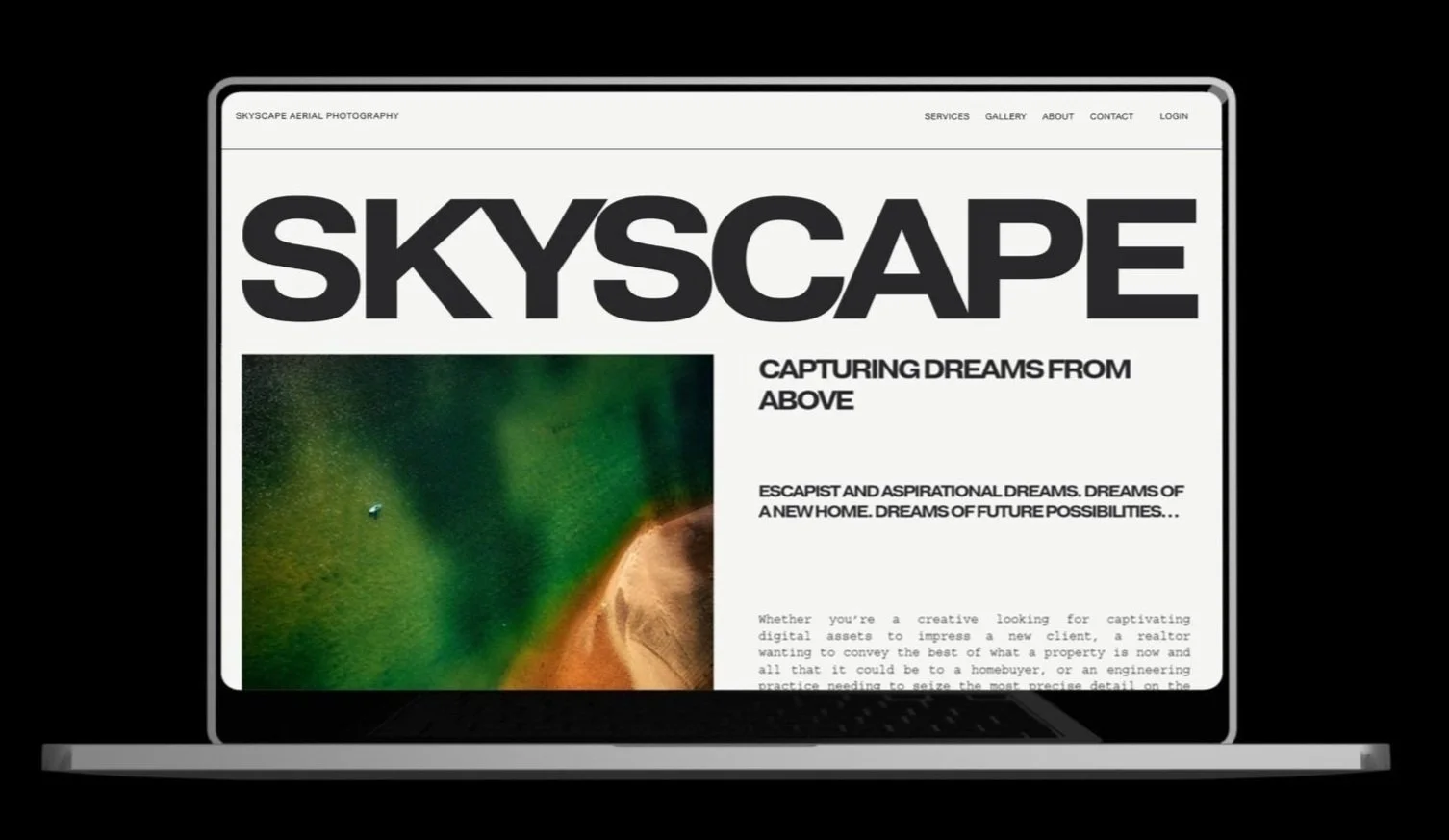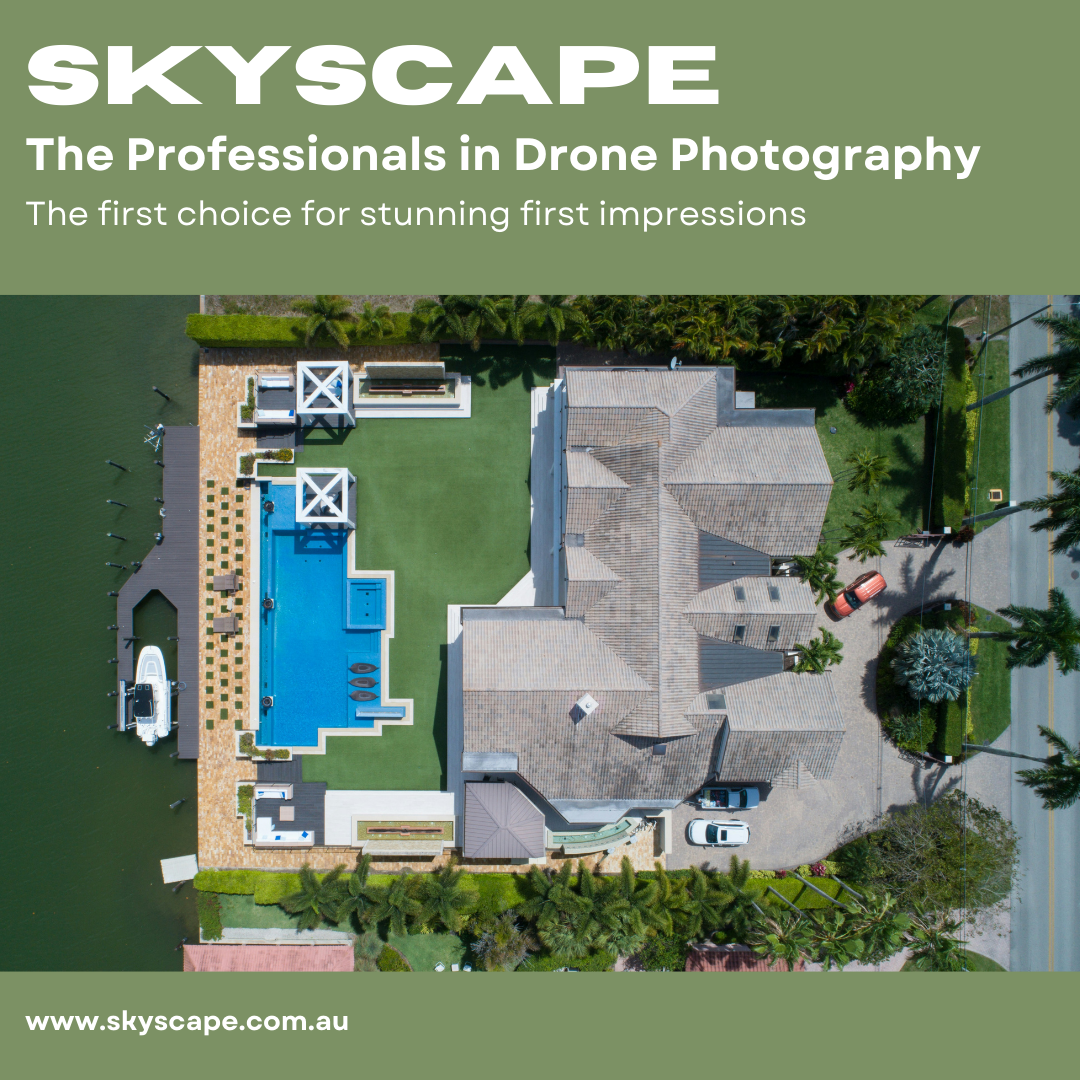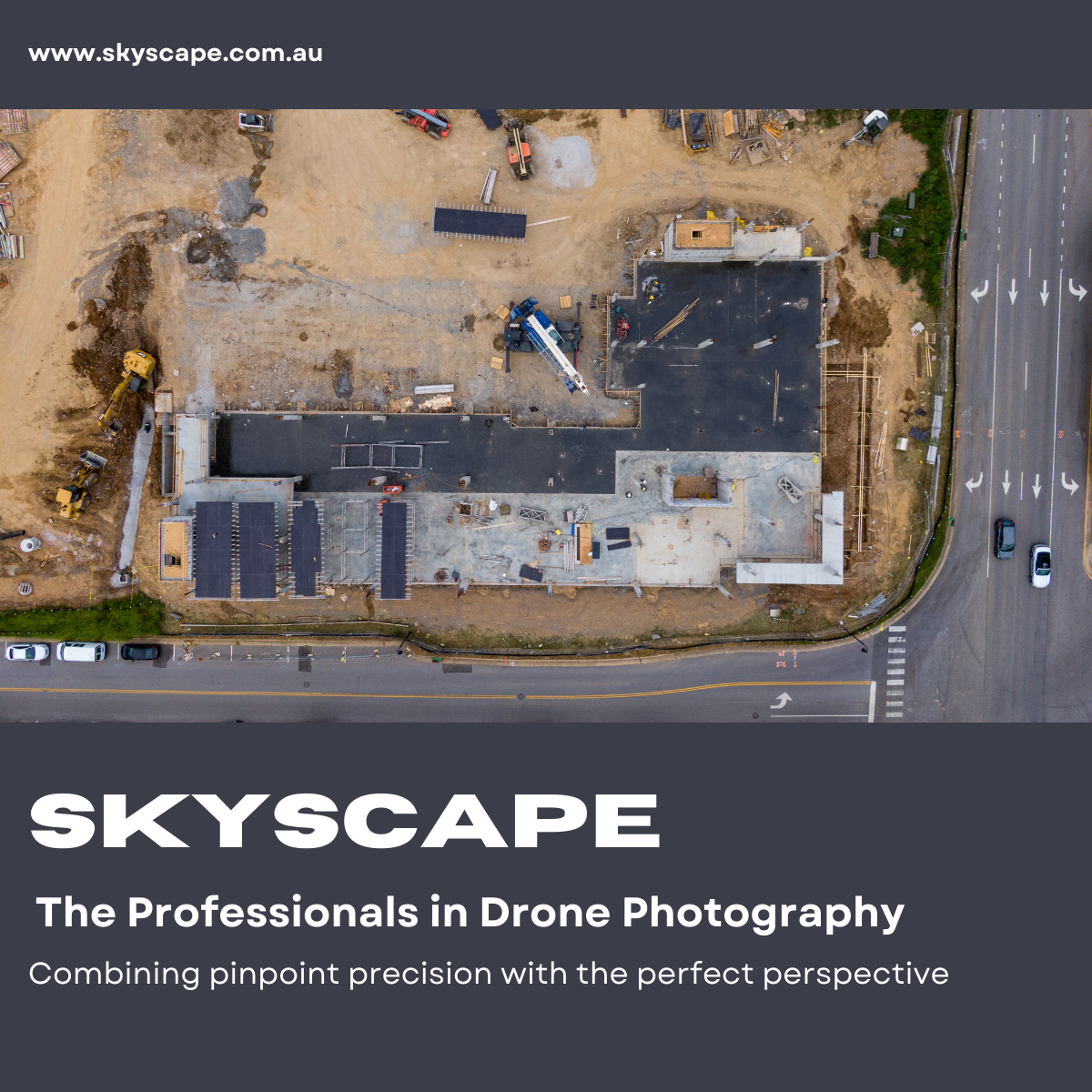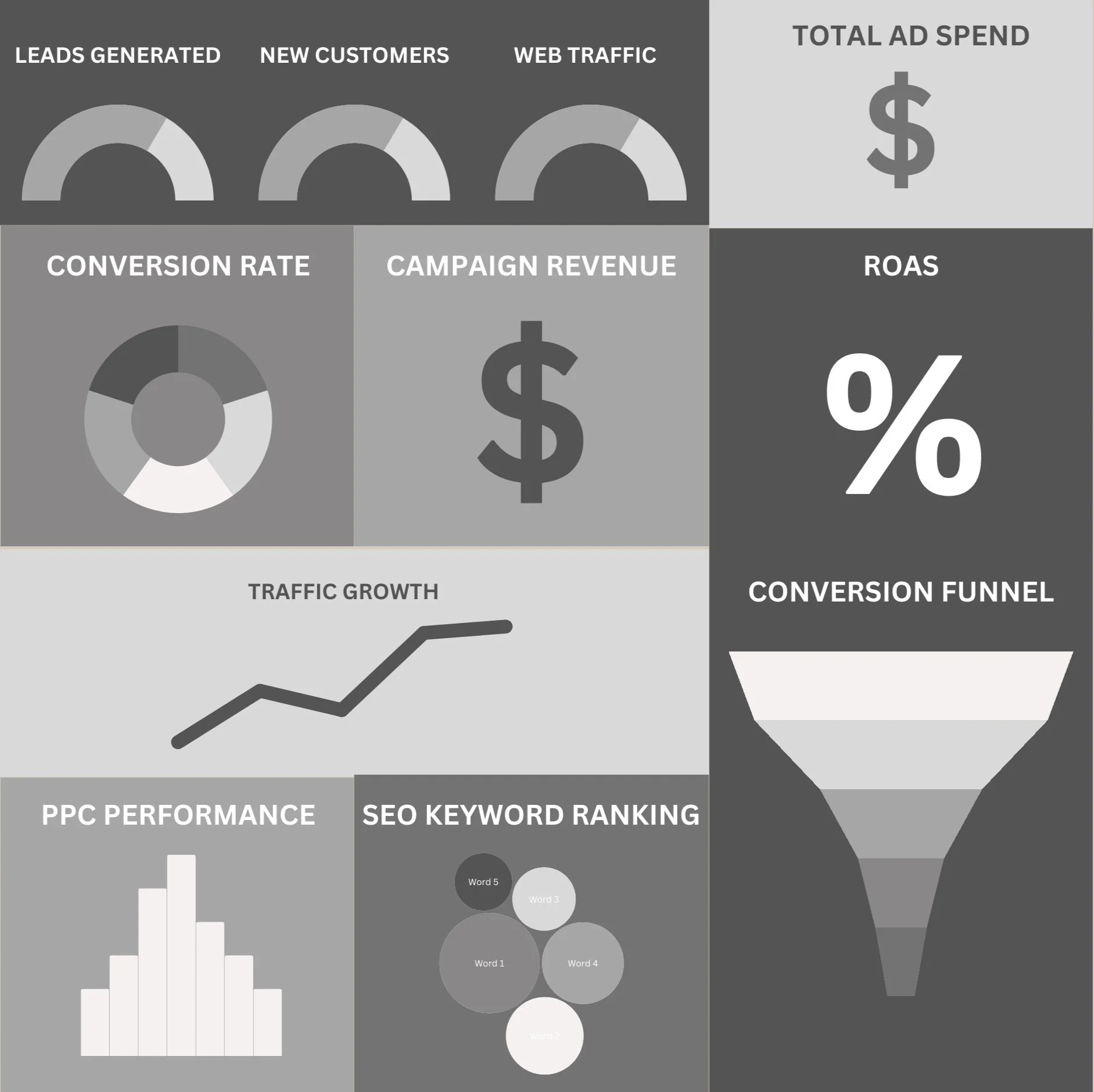
Overview
Client: Drone photography service in Sydney
Business structure: Small business
Lifecycle stage: Maturity
Campaign Budget: $4000
Planning Duration: 1 week
This case study looks at preparation of an integrated marketing plan of a six-month campaign with monthly reporting and live dashboard for a B2B aerial photography service in Sydney which offers high-quality drone photography and videography for property, construction, events, tourism, and mobility industry. Faced with challenges such as market maturation, saturation, and the affordability and sophistication of drone technology reducing barriers to entry for DIY or disruption, the business seeks to strengthen its position in the market and build opportunities for future expansion.
Analysis
Projected increase in Australian commercial drone flights to 2043
Airservices Australia, 2024.
Market
The use of drones in commercial photography started soon after Australia became the first country to regulate the use of drones with a 2002 amendment to the Civil Aviation Safety Regulations (1998) see (Norton Rose Fulbright, 2016), peaking in the early to mid-2010’s (see, for example, PwC, 2016), and a report commissioned by Airservices Australia (2024) projects an annual increase of 20% in commercial drone flights until 2043. While commercial aerial photography is considered to be in late maturity, more advanced use of drone technology in fields like data collection, deliveries, transport, logistics, and government develop and grow (see Deloitte Access Economics, 2020). Nevertheless, the application of drones in commercial and public service photography is slowing in growth rather than waning, and market intelligence sources like Drone Industry Insights (DII), based in Hamburg, Germany, indicate that sectors deploying drones in emerging areas use drones in multiple different ways, including photography and videography (see DII, 2024). In this environment, an established commercial drone photography business may wish to cement its reputation while looking for new opportunities to grow market share.
Target Audience
As a service provided under a B2B model, the target audience for the aerial photography business are the marketing managers at real estate agents, event planners, travel agencies, vehicle manufacturers and sellers, hotels, major transport providers, government agencies, and construction and property development companies. These prospective clients could likely be easiest reached through search engine and SEO marketing, social media, and organic marketing from networks in the relevant industry, such as talking to other marketing executives whose employers make use of aerial photography in advertising and promotion.
SWOT
The Story of Marketing Information Systems
Marketing information systems have come a long way since the Rolodex of the 1950s. On the enduring foundations first set out by Philip Kotler in 1967, marketing software companies around the world have been building out new functioning, metrics, and visibility tools through ongoing research and consultation with the marketing and advertising industry. The marketing system of today, with the growing use of AI agents, advanced analytics, and conversational abilities, represents a vast change from where it started, and many believe the agentic AI era offers an exciting new beginning for this technology. Read more...
Marketing Plan
An aerial photography business can take advantage of the visual and video streaming aspects of social media and advertising on platforms like YouTube, creating unique pieces on behind-the-scenes events, and demonstrating technical expertise through quick guides, did-you-know’s, and tutorials for different segments of the target market in plain English. Community-building on Facebook, TikTok, and Instagram through interactive content, thought leadership in a blog and publishing platforms with well-researched and carefully crafted articles, and participation in professional aerial photography communities on platforms such as LinkedIn can help the business to establish networks and perhaps source talent when needed. Underpinning these efforts with SEO across the website and published content, combined with ongoing monitoring and analytics will position the business for marketing success.
Social Media Management
Platforms: Focus on Facebook and Instagram for visual appeal.
Content Schedule: Post 3-5 times per week, using a mix of images, videos, and stories.
Engagement: Run monthly contests or Q&A sessions to encourage follower interaction.
Social Media Ads: Invest in targeted ads on Facebook and Instagram to reach specific demographics (real estate agents, event planners).
Search Engine Optimisation
Website Optimisation: Ensure the site is mobile-friendly, loads quickly, and uses relevant keywords.
Local SEO: Claim and optimise Google My Business to improve visibility in local searches.
Search Engine Marketing
Google Ads: Utilise pay-per-click (PPC) campaigns for local searches related to drone photography services
Monitoring & Analytics
Use of GA4 to track website traffic, user behaviour, conversions, and goal completions; monitoring how users are interacting with the website and the effectiveness of SEO, email campaigns, and PPC ads.
Google Search Console to monitor website performance in organic search, track keyword rankings, and identify search visibility, clicks, impressions, and CTR (click-through rate).
Social media analytics (Facebook Insights, Instagram Insights, and LinkedIn Analytics) to analyse the performance of social media posts, engagement rates, follower growth, and conversions originating from social platforms.
Email marketing platform to track key email marketing metrics, such as open rates, click-through rates (CTR), conversions, and the performance of automated workflows.
Google Ads and Facebook Ads Manager to measure the performance of search marketing (PPC) campaigns across both Google and Facebook platforms and gain insights into ad performance, including impressions, clicks, conversions, and return on ad spend (ROAS).
CRM or customer database to track leads, conversions, and customer information. This tool integrates with other marketing channels and helps analyse the entire customer journey, from lead generation to booking.
Email Marketing
Monthly Newsletter: Share recent projects, blog highlights, and special offers to keep subscribers engaged.
Lead Nurturing: Develop drip campaigns for new leads to provide useful information and encourage bookings.
Content Marketing
Blog Posts: Create weekly posts about drone photography tips, trends, and case studies.
Portfolio Showcase: Regularly update the website with new projects, emphasising different service areas (real estate, events, etc.).
Video Content: Produce short videos for social media showing behind-the-scenes footage and project highlights.
Performance Reporting
Weekly
Weekly reports focus on tactical metrics like PPC, social media engagement, and email campaign effectiveness. These snapshots allow for timely adjustments to active campaigns, like adjusting PPC bids or optimising social media content, and can be formatted as brief one-page summaries with key highlights and trends.
Monthly
Monthly reports can track broader performance metrics like website traffic, conversions, lead generation, and overall campaign success, as well as SEO metrics to monitor organic growth. They can be formatted in a 5-10 page document or presentation, summarising key insights and recommendations for the upcoming month and should include data tables and visual elements like graphs/charts.
Quarterly
Quarterly reports provide strategic analysis, focusing on overall progress toward business goals like brand awareness, lead generation, and customer acquisition. The report should compare quarter-over-quarter performance, include insights into customer behaviour and identify areas for long-term improvement. A quarterly report is typically 10-20 pages for a small business, and includes detailed insights, year-over-year comparisons, and actionable next steps.
Dashboard Design
Summary & References
In this case study a market plan was prepared for a small drone photography business faced with the challenge of limited brand recognition in a highly competitive market, dominated by local and national drone photography services. Existing marketing efforts lacked the structure and precision needed to target high-value clients such as real property developers, real estate agents, construction firms, event planners, large hotels, and other major players in the tourism industry. The marketing plan covered key areas such as SEO, search, and social marketing, as well as paid advertising, content marketing, and email campaigns. Lessons learned include the importance of showcasing visually striking drone photography from previous work the business has undertaken, while leveraging social media for engagement, and targeting key demographics through personalised, industry-specific messaging.
REFERENCES
Airservices Australia (2024). Sizing the future drone and advanced air mobility market in Australia.
Deloitte Access Economics (2020). Economic benefit analysis of drones in Australia, Final Report.
Drone Industry Insights (2024). Commercial drone use in 2024: Leading industries and methods.
Norton Rose Fulbright (2016). Rise of the drones: Opportunity and liability for businesses.
PwC (2016). Clarity from above: PwC global report on the commercial applications of drone technology, PDF.











